11312 A PAIR OF WELL DRAWN FIGURED VENEER AND SOLID WALNUT EARLY GEORGE I SIDE CHAIRS English. Circa 1720. Measurements: Height: 38 3/4″ (98.4 cm) Width: 21″ (53.3 cm) Depth: 21 1/2″ (53.9 cm)
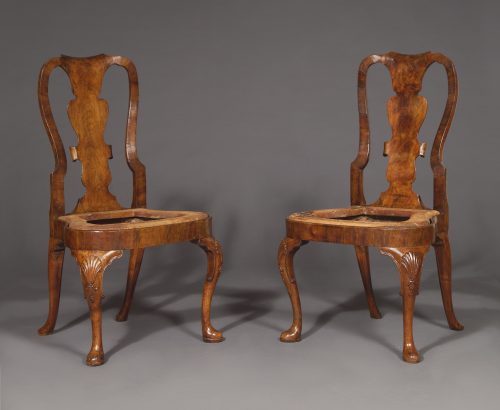
Research
Of solid and figured veneered walnut. Each with hoop back splat and restored volutes adjoining to veneered cross banded shaped outer rails. The drop in seat within a shaped cross banded frieze. The front legs of cabriole form with shell carved knees and terminating in a plain toe resting on a conforming pad. The back legs of graceful outswept form. Minor old repairs.
Marks:
Seat rails struck ‘III‘ and ‘IIII’
Provenance:
US Collection
The present pair of chairs is representative of English furniture design of the early George I period, an extension of the forms that evolved under Queen Anne, whose reign ended in 1714. While the scrolling, found here in the middle of the back splat, and pad feet and were features that carried over, Georgian refinements to the earlier models include the solid “hoop back splat,” rounded seats, and wider solid legs that eliminated the need for stretchers.1 Additionally, considerable inlay or other ornamentation was eschewed in favor of a single carved motif; in the case of the present chairs, the scallop shell and husk carving on the knees. A related chair from Manor House, the home of Sir Henry Bunbury of Mildenhall, Suffolk is illustrated in The English Chair by M. Harris, 1946, Plate 26b (figure 1).
Early Georgian furniture belonged to the age of walnut; high quality pieces like the present chairs employed solid walnut along with veneers. The decorative features and fine figuring of the wood was emphasized by cabinetmakers. Burr and root timbers produced particularly decorative patterns and the hoop back form presented several flat surfaces on which to showcase the material.
By the late 1720s, the basic model of this type of walnut splat back chair was made iconic by celebrated cabinetmaker, Giles Grendey. A member of the Joiners’ Company, Grendey was described as “a great dealer in the Cabinet Way,” and “an eminent Timber Merchant” in the 1740s and ’50s.2 He supplied some eighty pieces of furniture, including chairs of a strongly related form, but decorated with imitation lacquer, to the Duke of Infantado for Lazcano Castle in Spain circa 1735.
The present examples are distinguished by a light, feminine character not commonly seen in this model of chair. The well drawn carved cabriole front legs are complemented by elegant, gently out swept rear ones.
Footnotes:
- Gilbert, Christopher. Pictorial Dictionary of Marked London Furniture, 1700-1840. London: Furniture History Society, 1996. 31.
- Macquoid, Percy. The Dictionary of English Furniture from the Middle Ages to the Late Georgian Period: 1. Woodbridge: Antique Collectors’ Club, 1986. 220.
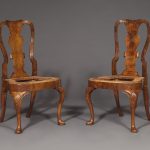
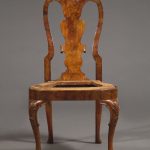
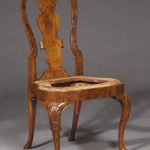
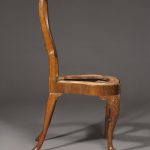
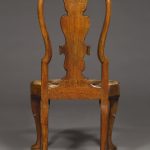

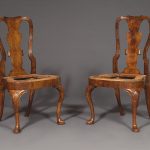
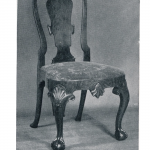
Comments are closed.